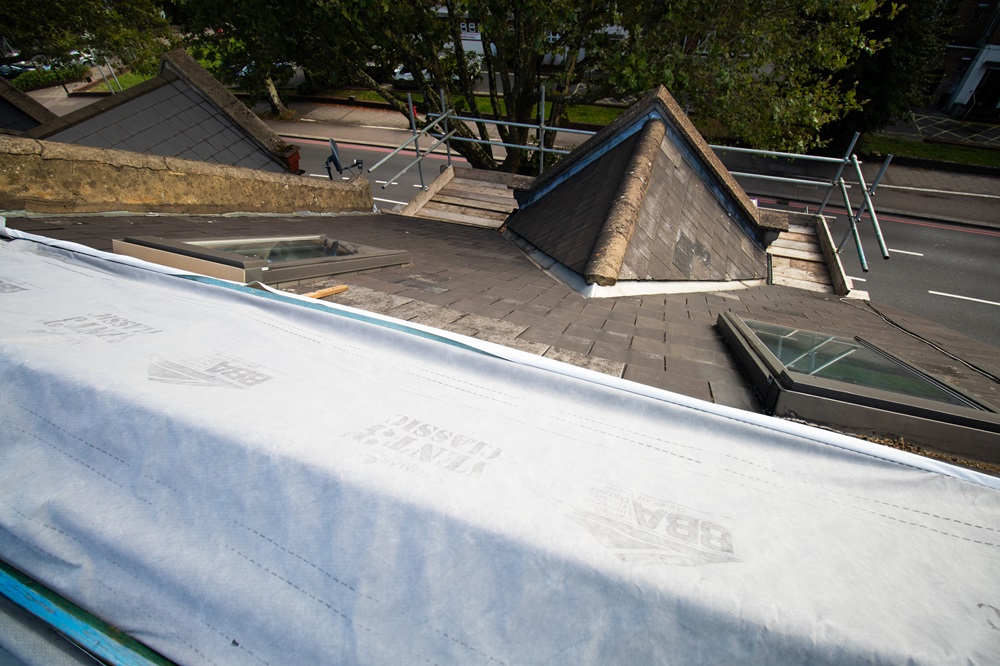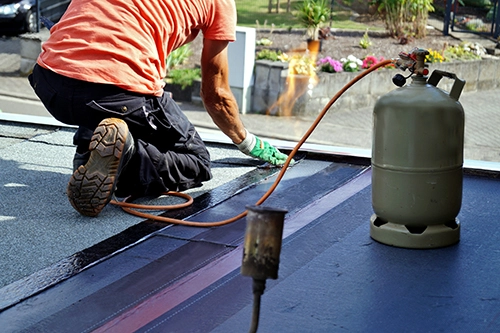- About Us
- Services
- Blog
- Contact
Need a quote?
It’s easy to disregard our roofs' maintenance until something goes wrong - but it’s an oversight that can cost a tonne, given how essential they are in shielding us against the harsh environment. Continuous exposure over time leads to wear and tear that ultimately could result in severe problems, sometimes requiring a full replacement! In this article we'll highlight some critical indicators suggesting it’s time for you to replace your old roof with a new one.




One of the primary factors affecting the health of your roof is its age. The average life span ranges from 20 to 25 years before they need replacing entirely. Look for telltale signs like curling or buckling shingles as well as missing or cracked ones. As you near the end of your old roof's lifespan, watch out for red flags such as granule buildup on gutters or around home perimeters.
These indicate significant wear and tear taking place, which means immediate attention is required. Neglecting roofing issues may lead to leaks and other expensive damage later on. A potential sign of trouble is sunlight peeking through the roof due to missing shingles or other damage.
Not repairing your roof quickly poses a safety risk and it could also increase energy expenses as well. Additionally, any sagging or dipping should prompt immediate action as it may indicate structural issues requiring quick attention. Keep in mind that different roofing materials have varying lifespans, staying informed allows for proper maintenance and planning for necessary replacements later on.
Don’t hesitate to take action when warning signs arise. Disregarding issues related to your roof could have severe financial implications in the future. Contact an expert roofer who can carry out an assessment of the condition of your roof to determine if it requires replacement or repair work.
Taking charge of maintaining your roof means securing lasting protection for yourself, family, and home over an extended period, so get in touch now to discuss your roofing requirements.
It depends on the construction, but the minimum weight a flat roof must be capable of bearing is 300lbs. This refers to a concentrated weight where a load is positioned on just one area of the roof. So, for example, a commercial flat roof can approximately support a 300lb HVAC unit in a 2.5×2.5ft single space.
If you opt for a flat roof anywhere on your property, remember that it comes with a need for proper maintenance. Low-slope roofing London-wide should be checked every six months or so, or after spells of bad weather, to spot any signs of damage. No matter how small, these should be addressed before they escalate. Remove any debris (leaves, twigs and so on) regularly to avoid these blocking the gutters and allowing water to pool and stand on the roof.
If there are trees in the close vicinity, keep them cut back to reduce the amount of foliage that falls on your flat roof. And check internally for signs of moisture, dampness or water damage on a regular basis. Spotting problems early means resolving them will be cheaper in the long run.

Building a flat roof can be done in three ways. The simplest and most cost-effective choice for levelled roofing London-wide is to construct a warm roof where a roofing membrane is placed over the insulation that keeps the timber structure warm. Another option is to create a cold roof where insulation is positioned between the rafters under the ply roof covering. This is commonly applied to flat-roofed extensions.
The third method is the hybrid roof that contains diverse elements. Their designs require a gap of ventilation above a warm roof to prevent excess moisture within the roof structure.
If you’re looking for flat roofing local contractors, don’t just select the first firm you come across. Find a roofing company that’s been in business for a while and can demonstrate a good track record in installing, repairing, and replacing flat roofs specifically. Ask for recommendations from your own network or from a local trade association. If you need refurbishment work done to 50% or more of your roof, you’ll need a roofing contractor who can self-certify their work under the Competent Person Scheme. Otherwise, the Building Control department at your local authority will need to approve the job before it begins.
Ask whether they are covered by liability insurance and how long they’ll guarantee the work they will carry out. And never just opt for the cheapest quote unless you’re quite sure they’re the best company for the job. You can’t afford to compromise on your roof as the structural integrity of your property depends on it.
Ensuring your flat roof will comply with building regulations before installation can save property owners time, money and stress. First, the roof must have a slope of around 1:80, with water draining away to one or two roof edges. Waterproofing must be extended up to the adjacent walls with at least 150 mm from the surface of the roof.
Contractors must install ventilation in cold roofs. For warm roofs, the deck must be bonded with a VCL. The roof should have the capacity to withstand strong winds and be sturdy enough to take an individual’s weight. Finally, check whether planning permission is needed. Typically, this is only required if you live in a conservation area or a listed building, or are making significant changes to an existing roof.
If you’re looking for top roofing solutions at competitive rates, check out our range of roofing services at Environ Roofing Company London. To get started, call one of our representatives today!

